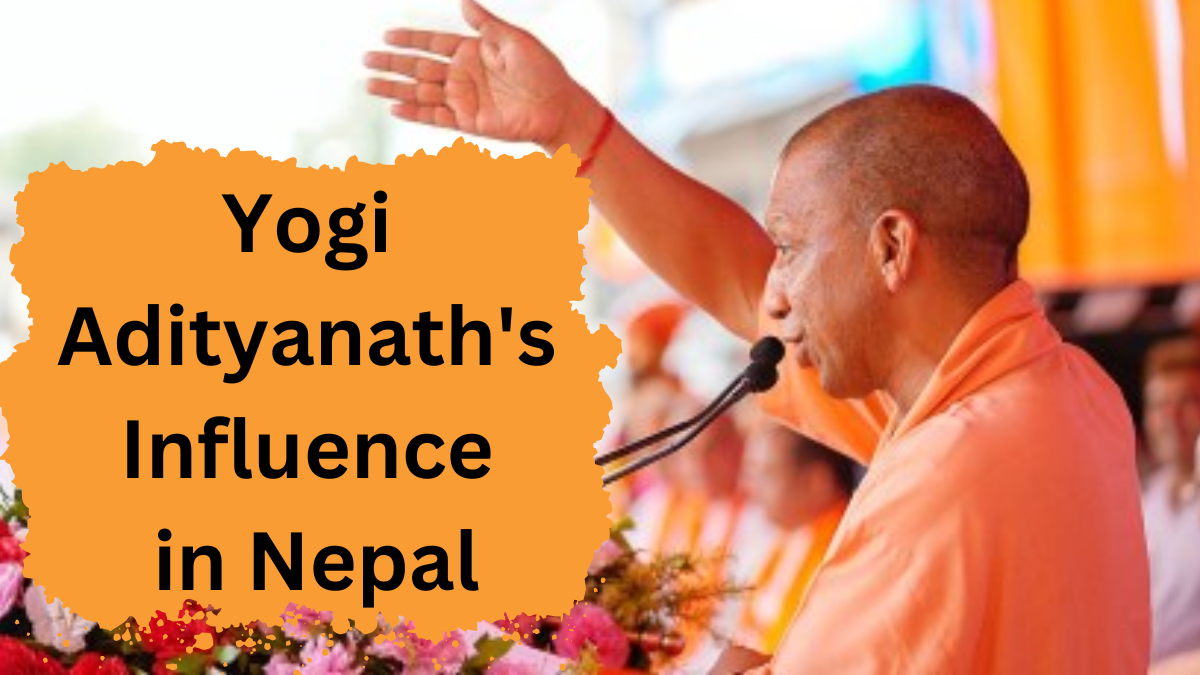The recent appearance of Uttar Pradesh Chief Minister Yogi Adityanath’s posters at a rally in Kathmandu stirred considerable attention in Nepal. The event, organized to welcome Nepal’s former king Gyanendra Bir Shah, highlighted the longstanding relationship between Nepal’s monarchy and Gorakhsh Peeth, an influential spiritual institution headed by Yogi Adityanath.
This incident has reignited discussions about the complex blend of politics, religion, and cultural ties that shape India-Nepal relations, particularly in the context of Hindu nationalism and Nepal’s historical identity.

Understanding the Gorakhsh Peeth-Nepal Monarchy Connection
The Shah dynasty, which ruled Nepal until the monarchy’s abolition in May 2008, holds deep-rooted spiritual ties with Gorakhsh Peeth. The Shah rulers identify themselves as Gorakhpanthi, signifying their allegiance to Guru Gorakhnath, the revered spiritual leader of the Nath sect.
Key Historical Links
The relationship between Nepal’s royal family and Gorakhsh Peeth is built on several significant historical and cultural foundations:
- Religious Ties: The Shah dynasty has long considered Guru Gorakhnath and his teachings central to their spiritual values. The Nath sect’s principles emphasize discipline, meditation, and austerity, which closely align with the values historically upheld by Nepal’s monarchy.
- Yogi Adityanath’s Role: As the head of Gorakhsh Peeth, Yogi Adityanath has maintained strong links with Nepal’s pro-monarchy groups. In 2015, Yogi visited Kathmandu to address a rally advocating for the reinstatement of Nepal as a ‘Hindu nation’. His presence at the rally further solidified his influence among Nepal’s Hindu nationalists.
- Pro-Monarchy Sentiment: Following the end of the monarchy and Nepal’s transition to a secular state, some factions within Nepal have called for the restoration of the monarchy and its traditional Hindu identity. This sentiment has been fueled by concerns over growing communist influence and China’s expanding presence in Nepal.
Rising Political Tensions and Religious Influence
A growing number of Nepalese citizens, particularly those following Hindu traditions, have voiced concerns over their nation’s shifting political landscape. According to a political analyst, these concerns have heightened due to:
- Nepal’s 82% Hindu population, many of whom feel disconnected from the country’s secular governance.
- The influence of the Communist government in Nepal, which some citizens believe has undermined the cultural and religious identity of the country.
- China’s increasing economic and political footprint in Nepal has created anxiety about Nepal’s sovereignty and traditional ties with India.
This environment has intensified calls for both the monarchy’s return and the restoration of Nepal’s identity as a Hindu nation.
Pradeep Bikram Rana’s Involvement and Claims
Pradeep Bikram Rana, a pro-monarchy supporter, emerged as a notable figure in this situation. Rana, who claimed responsibility for displaying Yogi Adityanath’s posters at the rally, alleged that he faced persecution from Nepalese authorities in Kathmandu. Feeling threatened, Rana fled to Gorakhpur, Uttar Pradesh — the headquarters of Gorakhsh Peeth — where he declared Yogi Adityanath as a “symbol of Hindu pride.”
Rana’s actions reflect a broader movement within Nepal, where certain factions view Yogi as an influential figure promoting the values of Hindu identity and monarchy restoration.
Continued Royal Traditions Despite Monarchy’s Abolition
Although Nepal’s monarchy was officially abolished in 2008, the former royal family continues to uphold some of its traditional ties with Gorakhsh Peeth. As part of these longstanding customs, the former royal family sends monetary offerings to the temple during key religious events.
According to Dwarika Tiwari, the administrator of Gorakhsh Peeth since 1972, the following contributions are still made by Nepal’s former royal family:
| Occasion | Offering Sent by Nepal’s Royal Family |
|---|---|
| Makar Sankranti | Rs 10,000 |
| First King’s Birthday | Rs 5,000 |
| Dussehra | Rs 5,000 |
In return, Gorakhsh Peeth sends ‘prasad’ to the former royal family every year through a dedicated representative. This exchange signifies the enduring spiritual bond between Gorakhsh Peeth and the former monarchy.
The Legend of Guru Gorakhnath’s Blessing
A well-known legend further strengthens the historical ties between Guru Gorakhnath and Nepal’s monarchy. According to folklore, Guru Gorakhnath once blessed Prithvi Shah, the first ruler of unified Nepal. As a young boy, Prithvi Shah was foretold to become a powerful monarch who would unite Nepal’s fragmented provinces under one rule.
This prophecy eventually came true as Prithvi Shah successfully unified various regions into the modern state of Nepal. The Shah dynasty has since revered Guru Gorakhnath, maintaining a spiritual and symbolic connection with Gorakhsh Peeth.
Cultural Implications of the Recent Controversy
The presence of Yogi Adityanath’s posters at the Kathmandu rally has broader implications:
- Religious Sentiment: Many pro-monarchy groups view Yogi as a spiritual figure whose leadership aligns with the values upheld by the former Nepalese monarchy.
- Political Symbolism: Yogi’s association with Hindu nationalism resonates with factions pushing for Nepal’s return to its identity as a Hindu state.
- Diplomatic Concerns: Nepal’s political leaders have expressed concern about Indian political figures influencing internal affairs, especially regarding the monarchy’s role.
FAQs
1. What is Gorakhsh Peeth?
Gorakhsh Peeth is a prominent spiritual institution based in Gorakhpur, Uttar Pradesh. It holds significant influence in the Nath sect and serves as a major center for Hindu spiritual teachings. Yogi Adityanath is the current head of Gorakhsh Peeth.
2. Why did Yogi Adityanath visit Nepal in 2015?
Yogi Adityanath visited Kathmandu in 2015 to address a rally organized by pro-monarchy groups. During the event, he advocated for Nepal’s return to its previous status as a Hindu nation, emphasizing the country’s strong Hindu heritage.
3. What is the significance of Yogi Adityanath’s posters in Kathmandu?
The appearance of Yogi’s posters at a Kathmandu rally reflects growing support for his leadership among Nepal’s pro-monarchy and Hindu nationalist groups. It also highlights broader tensions regarding Nepal’s identity and governance.
4. How does Nepal’s former royal family maintain ties with Gorakhsh Peeth?
Despite the monarchy’s end, Nepal’s former royal family continues to send financial offerings to Gorakhsh Peeth on key religious occasions. The temple, in turn, sends ‘prasad’ as a symbolic gesture of their enduring spiritual connection.
Click here to learn more
